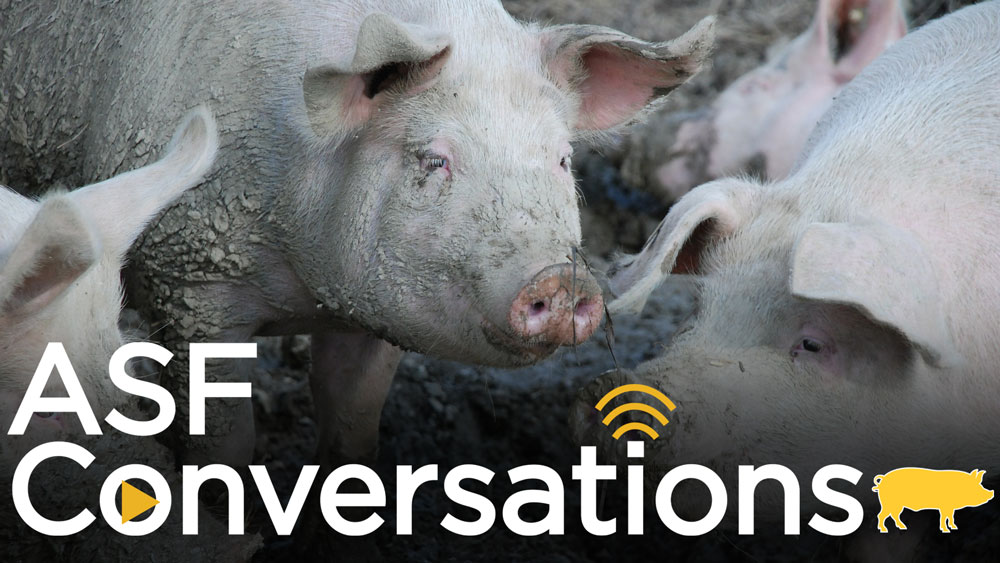
Cases of African Swine Fever (ASF), a virus highly contagious among pigs, have been reported throughout Africa, Europe, Russia, and—most recently—China. The first outbreak of ASF in China was documented in August 2018. By September, 14 outbreaks had been recorded and more than 38,000 pigs were culled.
Quick to respond, the Center for Animal Health and Food Safety (CAHFS) at the University of Minnesota (UMN) created a multimedia toolkit called ASFWatch, which focused on educating producers about ASF, how it’s spread, and what they can do to prevent it from entering the United States.
The project took a novel approach, filming and recording experts interviewing other experts in a series called ASFConversations. The project also includes a timeline that traces ASF from the first reported case in Kenya in 1909 all the way up to August’s outbreak in China. The website publishes reports of recent ASF outbreaks, videos and audio podcasts, maps, fact sheets, and infographics.
The CAHFS team debuted the series at the Allen D. Leman Swine Conference, a preeminent swine producer conference with nearly 600 attendees that is hosted by UMN each year, in September 2018.
“Usually information like this is displayed as a PDF or slideshow, but we took it further and made the material more engaging,” says Gus Brihn, BVMS, MRCVS, Veterinary Public Health and Preventive Medicine resident at CAHFS.
The project was a collaboration between CAHFS and multiple units at the College of Veterinary Medicine (CVM): the Veterinary Diagnostic Lab, Veterinary Population Medicine department, Swine Disease Eradication Center, and Swine Group. The UMN teams collaborated externally with two of the country’s leading swine health and safety organizations, the National Pork Board (NPB), and Swine Health Information Center (SHIC).
“Working with such a diversely-skilled team was crucial in bringing different swine health knowledge to the table,” Brihn says.
Viruses like ASF can hitchhike to the U.S. through feed, a lot of which the U.S. imports from China. Unlike Foot-and-Mouth Disease or Classical Swine Fever — two other common swine viruses — there is no known treatment for ASF. Outbreaks of all three of these viruses must be reported to the World Organization for Animal Health (OIE), who runs an international database that tracks animal disease.
The U.S. exports nearly one-third of the pork it produces. A reported case of ASF could be detrimental to the industry because countries are less likely to purchase foreign pork products from a country with reported swine disease, especially hard-to-control ASF.
“A lot of trade between countries depends on their disease status,” says Brihn. “If a country is found to have a disease, a lot of countries that are free from that disease will stop trading with them because they don’t want to risk bringing the disease to their country.”
The ASFWatch platform can be updated in real time, making sure the most up-to-date information is getting to the people who need it most.
Brihn says that the University of Minnesota’s high-ranking status in the field of swine health is what led to the novel creation of these new tools. “The U of M has a strong presence in swine health,” says Brihn. “There is such a large bank of experts here which is why the U of M is such a perfect platform for ASFWatch.”

